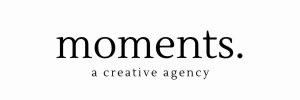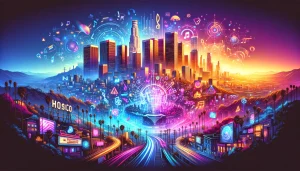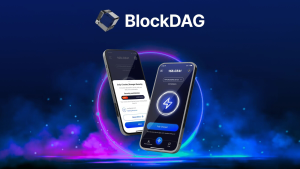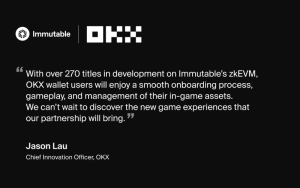Exclusive: Inside $14.5 Million Autoglyphs set acquisition
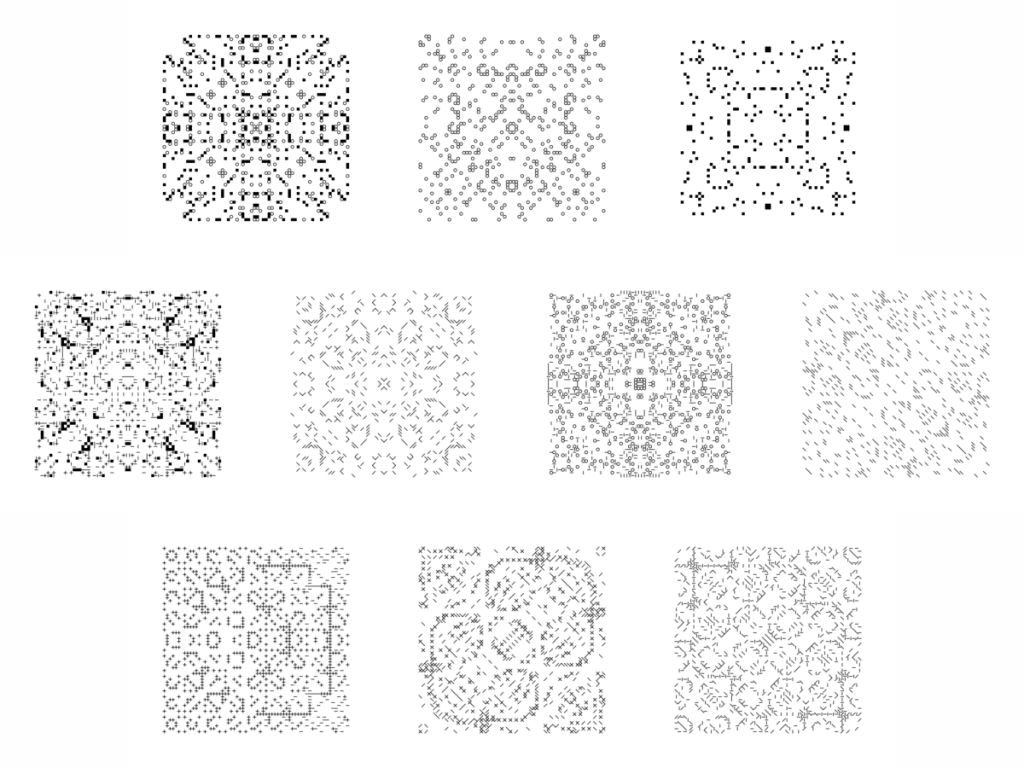
Advertisement: Click here to learn how to Generate Art From Text
On February 19, one the largest digital art transactions on the blockchain ever took place. The transaction was for 10 Autoglyphs – the seminal project in generative art released by Larva Labs April 2019.
In a landmark crypto art sale brokered by the platform for brokerage of crypto art FountainThe Autoglyphs Set sold for 5,000 ETH (approximately $14.536 million) to a collection of traditional art. This set is one out of three, which adds to its rarity. “dev sets”All 10 pieces have a series numbering below 100.
The anonymous collector plans to display the works in museums, galleries, and other institutional settings. They were represented by an art advisor Amanda SchmittWho was featured on TIME magazine’s “Person of the Year”Cover in 2017
Autoglyphs is widely regarded as the first on chain generative art on Ethereum blockchain. Launched by Larva Labs’ Matt Hall and John Watkinson nearly two years after they famously CryptoPunksThe set of 512 outputs is one of the most sought-after collections of generative art.
“For a collector, acquiring a set of 10 Autoglyphs is one of the most coveted and difficult-to-acquire artworks,” Schmitt tells nft now. “There are only seven other collections in the world that also have this, one of them being Larva Labs itself.”
“Today’s acquisition demonstrates the enduring conviction collectors have for digital art on the blockchain,” Noah DavisSenior Specialist at FountainTell nft to me now. “Securing a full set of Autoglyphs — hands down, the most important early collection of generative art on Ethereum — is nothing short of a legendary achievement. The team at Fountain is delighted to have played our role in the sourcing, negotiation and settlement of this historic purchase.”
In an exclusive interview with Schmitt, nft now learned more about the acquisition and what’s next for the set.
How did the acquisition of nft come about?
Amanda Schmitt:This acquisition was made by a large traditional art collection. It demonstrates their commitment to embrace the evolution of artistic expression, and innovation, in all its forms, digital and pre-digital. Autoglyphs’ appeal goes beyond its beauty. It is a seminal work in the evolution of NFTs. Autoglyphs, as the first generative series, is immutable and self-contained. It is also fully on the blockchain. Autoglyphs’ connection to a rich lineage of digital art and generative works since the 1960s and its relationship to Conceptual Art and Minimalism is also recognized by the collection. Further, its roots can be traced back to influential early twentieth-century movements, such as Concrete Art. The collection was heavily influenced by the innovation of abstraction during the 20th century. Acquiring a set Autoglyphs seemed like a natural progression.
Why did the Autoglyphs set appeal this collector?
I have advised on several collections. Some are focused on traditional art forms, others on on-chain digital artwork, and sometimes on both (as in the case of this collection). They developed their aesthetics by collecting traditional analog forms of art. We began to understand the extraordinary innovations being made by artists using on-chain technology such as NFTs, on the Ethereum blockchain. We see Autoglyphs the same as a painting, or a sculpture.
Larva Labs’ Autoglyphs are among the earliest and purest forms of on-chain digital art. Their algorithmic and aesthetic nature connects to early computer generated art and with coding. This aesthetic also has strong connections with early modernist concrete and abstract art. Piet Mondrian’s + – paintings come to mind such as “Composition 10” from 1915, and clear references can be made to early computer compositions of the 1960s (many have reference Michael A. Noll’s work of this time).
“Larva Labs’ Autoglyphs are among the earliest and purest forms of on-chain digital art. Their algorithmic nature and aesthetic connect with early computer generative art and with coding itself.”
AMANDA SCHMITT
The Autoglyphs must also be placed in a genealogy of conceptual art and their most obvious precedent is Sol Lewitt’s instructional drawings. I also must draw a comparative analysis against Hans Haacke’s Manet-PROJEKT 74 —a classic institutional critique piece made in 1974 in which all the successive owners of a Manet painting are uncovered through meticulous research. This piece was intended to expose the machinations in the art market. In the blockchain, transaction history and provenance are always already part and parcel of the meaning of the work. In this case, it is in a positive and value-enhancing manner.
Autoglyphs have a special place in my heart because they were created from a place where creative problem-solving was used (many scientific and artistic epiphanies were made this way). Larva Labs faced a challenge after creating the seminal CryptoPunks series. The Ethereum chain had its own limitations. They discovered that the generative code was the artwork: its inherent beauty is obvious.
Autoglyphs is both beautiful and ancient. They have been described as the cave paintings for on-chain generative arts. Their primitivism, simplicity, and the leap forward they made are what earns them this name. They also feel to me, as if they are a language from the future that we don’t quite understand yet (at least, literally). They’re both mysterious and mystic. It’s a hyperbolic gesture, but I almost feel, as if if we were to project these Glyphs into outer space extra-terrestrial beings would finally understand what we’re trying to say.
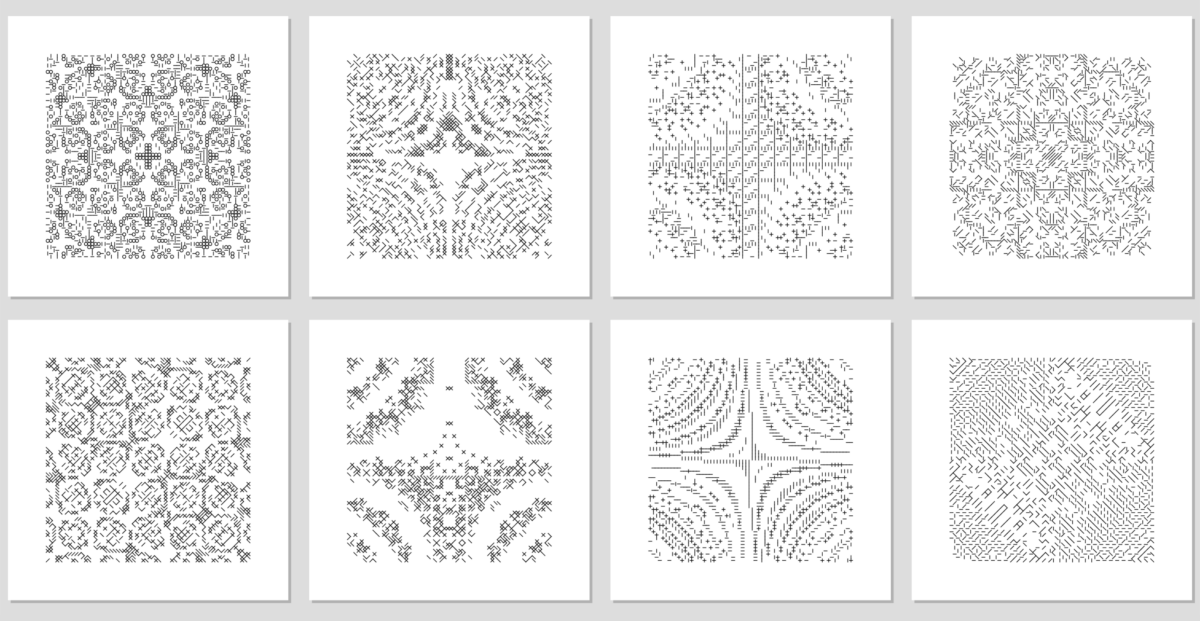
I understand the collector’s desire to remain anonymous. What can you tell us about this collection?
This is only one of the many acquisitions that are planned for this collection. The ultimate goal is to display these artworks in museums and other institutional settings.
“This acquisition is one of several in the pipeline for this particular collection. Their goal is ultimately to present these artworks within museums and institutional settings in the future.”
AMANDA SCHMITT
What do you think makes this Autoglyphs acquisition historical?
For a collection, acquiring 10 Autoglyphs sets is one of most coveted and hard-to-acquire art pieces. There are only seven collections in the entire world that have this. One of them is Larva Labs.
Furthermore, this grouping is especially rare because it’s only one of three “dev sets,”Larva Labs, which owns #1, considers this to be an important fact.
“This is also fifth highest on-chain transaction price for NFT sale, and what makes it especially unique is the intimacy and directness of the transaction, which was made through a broker, Fountain.”
AMANDA SCHMITT
This is also the fifth highest on-chain sale price for NFT. What makes this transaction unique is its intimacy and directness, as it was done through a broker (Fountain) rather than an auction house, where there were multiple bidders. I think this is a testament to the many innovations in blockchain technology when it comes to transacting artwork. This transaction is transparent compared to the traditional world of art, which can be opaque.
This is also the highest price paid in the past two years for an NFT art work. It is worth every ETH.
What’s the collector’s outlook on the digital art market at large? Do they intend to make more such purchases in the future?
In their opinion, the NFT market has never died. In many ways, they feel that this is just the beginning and they are eager to have the opportunity to acquire some of the most rare and important on-chain digital works in this medium’s early history.
The post Exclusive: Inside $14.5 Million Autoglyphs set acquisitionFirst on nft Now.

‘ Credit:
Original content by nftnow.com: “Exclusive Inside the Historic $14.5 million Autoglyphs Set Purchase”
Read the complete article at https://nftnow.com/features/exclusive-inside-the-historic-14-5-million-autoglyphs-set-acquisition/
